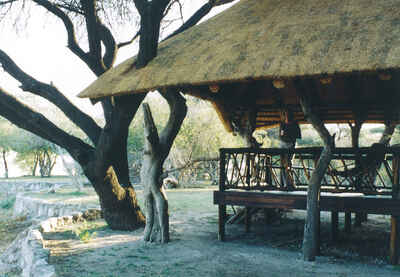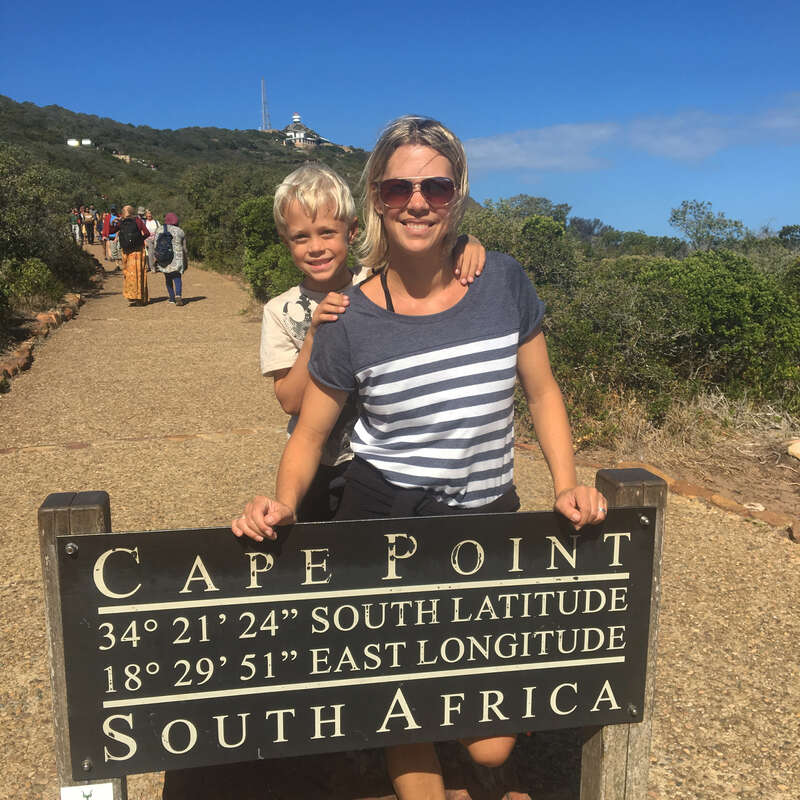About Edo's Camp (currently closed)
Edo's Camp is a small tented camp situated on a 1,200km² game conservancy in the northwest Kalahari.
The original farmland was bought by an Italian gentleman with the idea of having his own place in Africa where he could invite his friends on holiday. Around eight years ago the camp was built as private accommodation for the Italian gentleman with the help of an old-time Botswana guide, Stephan Lewis.
As of June 2020 Edo's Camp changed ownership and is closed until further notice. We do know that they do not plan to re-open in 2022, but we have no information about when or if they will re-open at some point.
We've mostly used Edo's as a good stop over for our Namibia self-drive travellers looking to incorporated some time in Botswana. It offers a glimpse into some typical Kalahari scenery, and has always been a convenient stopping point. But for those wanting to experience the real Central Kalahari Game Reserve, it's worth venturing a little further into the CKGR park boundaries itself. The rhino tracking at Edo's is however worth the visit - but we'll have to see what the new owners have in stall for the launch in 2022.
Our view
We've mostly used Edo's as a good stop over for our Namibia self-drive travellers looking to incorporated some time in Botswana. It offers a glimpse into some typical Kalahari scenery, and has always been a convenient stopping point. But for those wanting to experience the real Central Kalahari Game Reserve, it's worth venturing a little further into the CKGR park boundaries itself. The rhino tracking at Edo's is however worth the visit - but we'll have to see what the new owners have in stall for the launch in 2022.
Accommodation
4 meru tents
Children
Best for 7+
Open
Seasonal
Activities

4WD Safari

Birdwatching

Cultural excursion

Guided walking safari

Night drive

Private activities
Traveller reviews of Edo's Camp
8 real, un-edited reviews from Expert Africa's travellers.
Arrived 19 Sep 2018, 2 nights
"Edo's Camp reviesw"
Overall rating: Excellent
Arrived 23 Sep 2017, 2 nights
"Edo's Camp review"
Overall rating: Excellent
Arrived 13 Jun 2016, 3 nights
"Edo's Camp Review"
Overall rating: Excellent
Arrived 13 Jun 2016, 3 nights
"Edo's Camp is really"
Overall rating: Good
Arrived 6 Oct 2013, 2 nights
"Edo's Camp review"
Overall rating: Average
Arrived 10 Sep 2013, 2 nights
"Rhino Tracking Adventure"
Overall rating: Excellent
Arrived 4 Oct 2009, 2 nights
"Tracking rhino on foot!"
Overall rating: Excellent
Arrived 13 Aug 2007, 2 nights
"What a great time!!"
Overall rating: Excellent
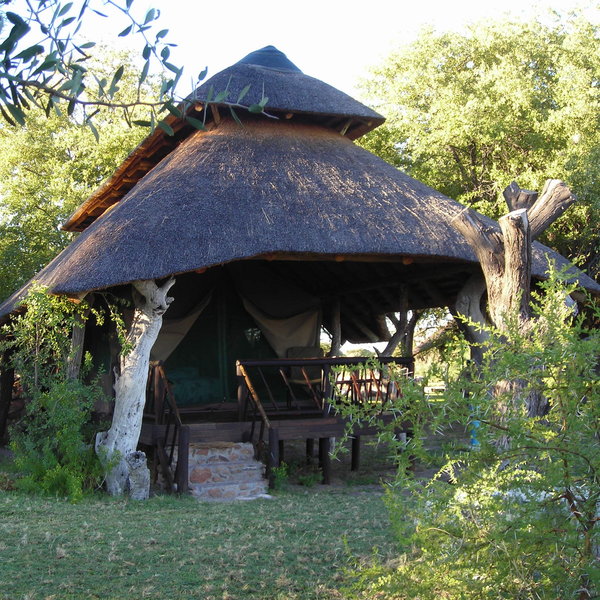
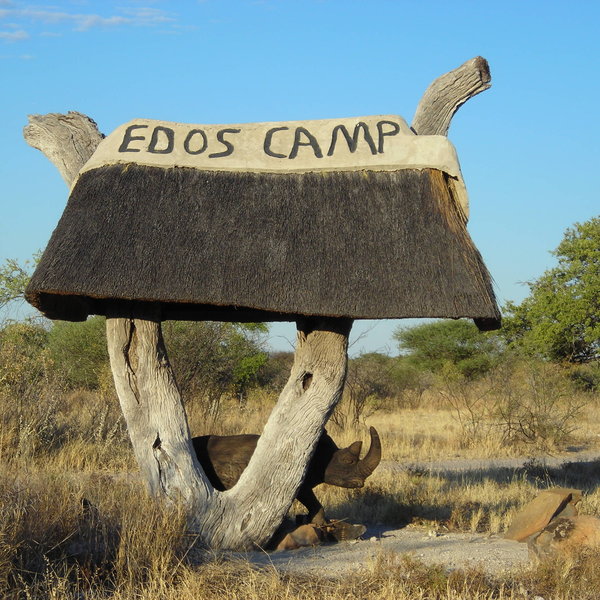
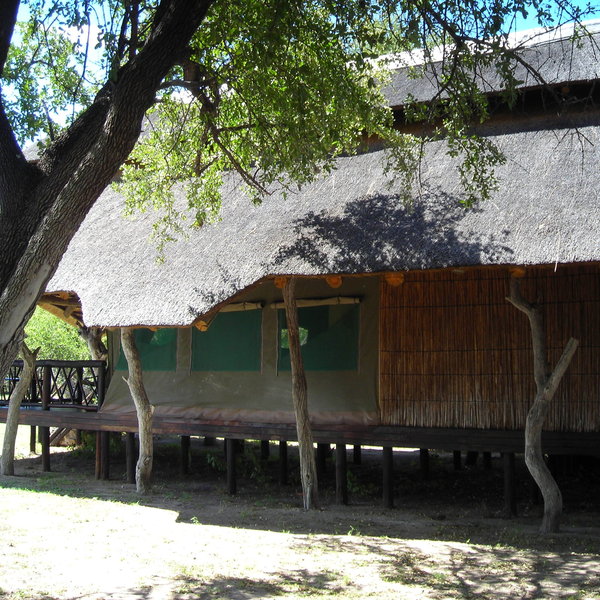
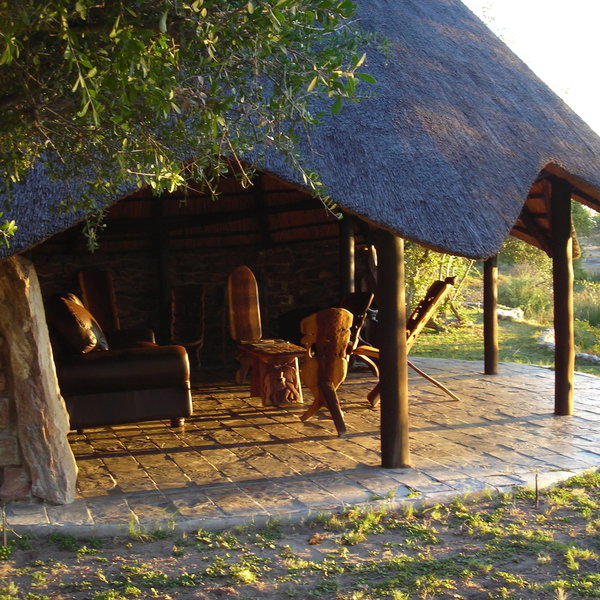
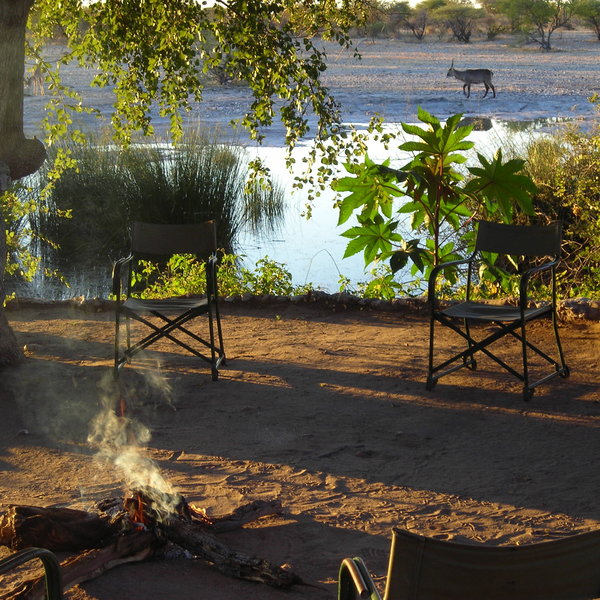
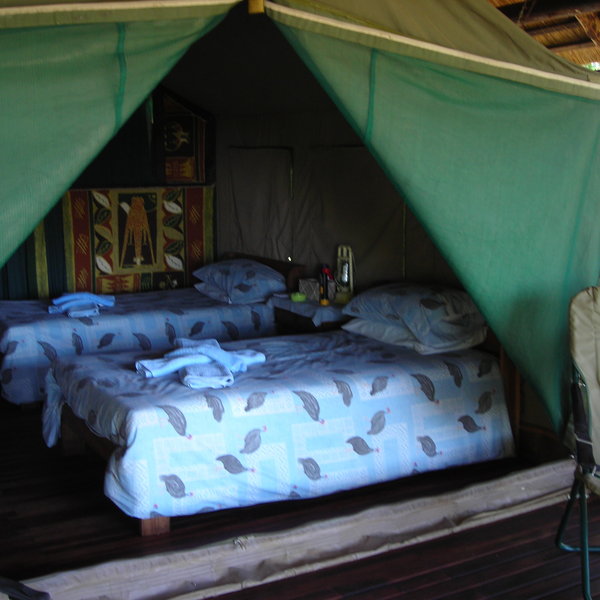
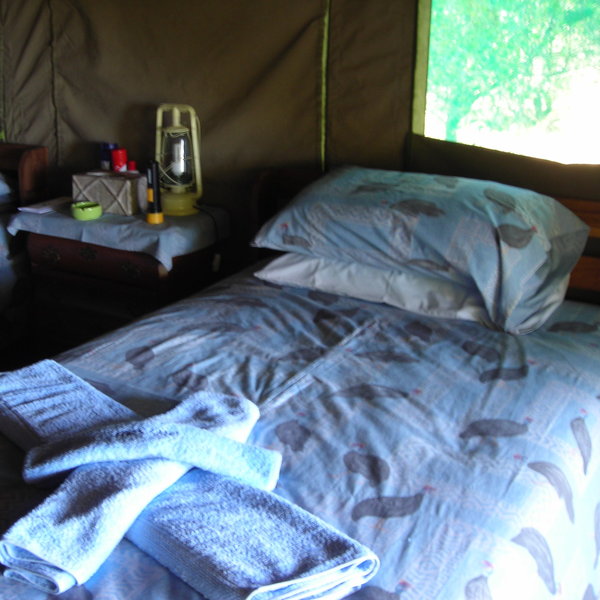
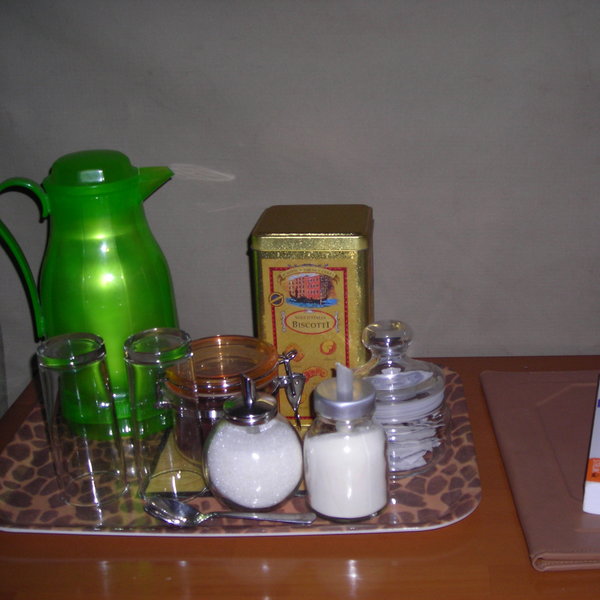
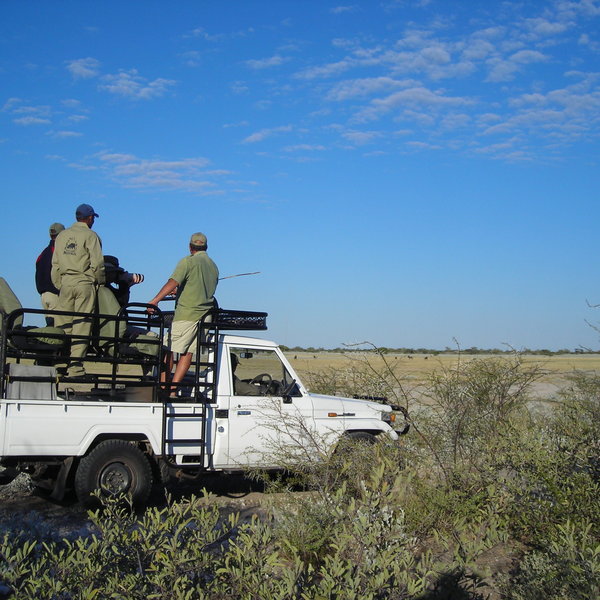
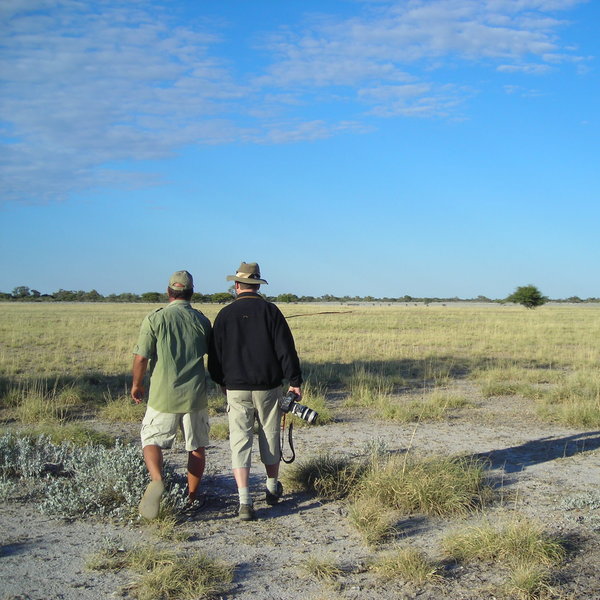
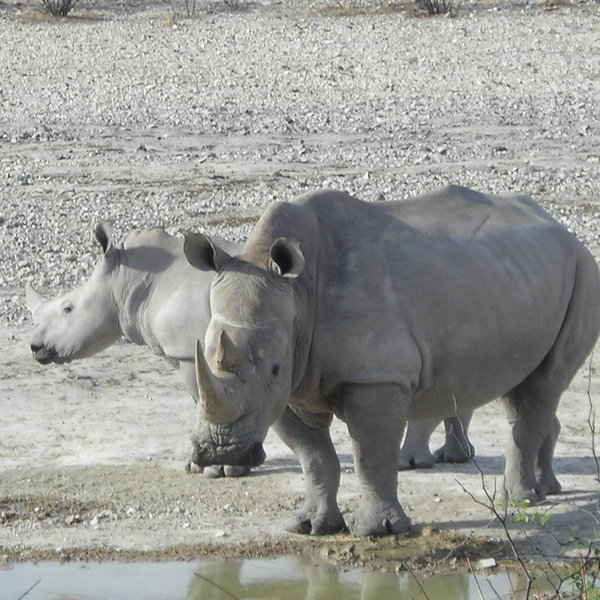
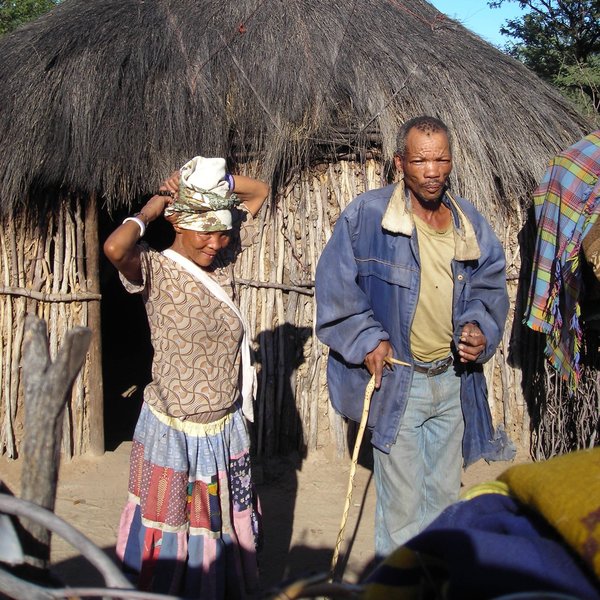
Expert Africa's gallery
When we travel we take lots of photos ourselves to give you a real and un-edited view of the trips. See our 22 pictures of Edo's Camp to get the candid view.
View galleryEdo's Camp: Our full report (currently closed)
Edo's Camp is a small tented camp situated on a 1,200km² game conservancy in the northwest Kalahari.
The original farmland was bought by an Italian gentleman with the idea of having his own place in Africa where he could invite his friends on holiday. Around eight years ago the camp was built as private accommodation for the Italian gentleman with the help of an old-time Botswana guide, Stephan Lewis.
As of June 2020 Edo's Camp changed ownership and is closed until further notice. We do know that they do not plan to re-open in 2022, but we have no information about when or if they will re-open at some point.
The most idyllic spot in the camp is around the campfire under the cover of an old leadwood tree. This position offers 180-degree views of the waterhole and the wildlife that regularly comes to drink here.
Set a little back from the campfire is a thatched dining area, whose open sides offer views of the waterhole in case something exciting comes for a drink during mealtimes! Meals are eaten as a group around a long table here.
A small thatched lounge is surrounded on three sides by a stone wall to keep out the cold southerly wind during the winter months, whilst retaining a view over the waterhole. A leather couch and various Malawi chairs offer comfortable seating under cover during the hotter hours of the day.
The camp's swimming pool is less well placed, at the back of the camp and surrounded by a stone wall. Despite the lack of enticing views, the pool is nice and large (you can swim laps in it) which makes a change from the usual small plunge pools found at other camps in Botswana.
Edo's Camp has offered a local Bushman community initiative the use of a thatched rondavel to set up a curio shop. At the time of our last visit, the room was being donated to the group at no charge, but in return the stock and curio sales will be their sole responsibility.
Edo's Camp has four spacious en-suite Meru tents, and so takes a maximum of eight guests. Each of the tents is built up on raised wooden platforms. High thatched roofs mean that the tent interiors are quite cool throughout the day. A covered wooden deck, complete with canvas loungers, camp chairs and a table, offer great views over the waterhole.
The canvas door to the tent can be unzipped and opened for the view whilst an inner mosquito netting remains zipped up to keep out any small intruders. The tent interior has two beds separated by a bedside table. Duvet covers and pillow cases are made up of African print material and this theme is carried through batique wall panels and curtains through to the bathroom.
Rugs cover dark stained wooden floorboards that match the dark wood furniture. A dresser and small wardrobe allow for ample clothing storage. A torch, insect repellent, bug spray, tea and coffee are provided in each room.
The bedside lamps operate on solar power which is available 24 hours a day. Each tent has a 220V plug point which can be used for charging or hairdryers. There's also a large free standing fan.
Most tents have a wooden door which leads from the bedroom to the en-suite bathroom, but two of the tents have curtains which separate the rooms. Although the bathroom is an addition to the tent it is enclosed by reed walls and covered by a net ceiling.
Two of the tents have both a shower and a bath. One tent has a shower only and the last tent, a bath only. The showers are large and spacious and the baths are fitted with brass taps and a hand held shower. Water is heated by a donkey (a drum with a wood burning fire underneath) and lit each morning and evening.
The toilet is a flush toilet. There is a plug point by the bathroom sink and a large mirror, alongside a smaller shaving mirror, hangs over the sink. Soaps, shampoo, a shower cap and face cloth are available in each bathroom.
The main light is dimmed so as not to attract insects and runs off solar power. Towels are provided and there is a laundry bag in each bathroom.
The camp's main attraction is its permanent floodlit waterhole. This uses a natural pan, Edo's Pan, is filled each rainy season and then the lodge pumps additional water into it during the drier months. In fact, this is part of an ancient river system between Botswana and Namibia, within the Kalahari's fossil dunes.
In the past, this has been one of a chain of pans which have played an important part as water points along the old trek routes. These days, an almost continuous parade of wildlife visits Edo's Pan, including kudu, wildebeest, waterbuck, impala and occasionally, rhino and eland. We recommend that you spend at least one evening here, beside the pan, watching the sunset during your stay.
Edo's Camp differs from many of the more 'traditional' safari camps of northern Botswana, most of which are found in the riverine and Delta areas. Instead Edo's stands in a classic Kalahari landscape.
Its linear sand dunes have a thin covering of bushes and trees, and all of its game and wildlife are adapted to survive without access to permanent water. Here you'll find typical Kalahari game species like gemsbok (oryx), springbok, brown hyena and meerkats.
Stephan has remained the camp's manager and he, and his staff, offer a relaxed, personal and friendly service during your stay here. Stephan, is an experienced safari guide and has lived and guided on this area for some time. He has quite an extensive knowledge of the area and is always keen to point out the plants and animals that are special to these drier regions of Botswana. He is busy training his up nephew, also called Stephan, to follow in his footsteps as a guide.
A real highlight of Edo's Camp is white rhino tracking. There are now twelve rhino and tracking them on foot is an optional morning activity. You'll start by driving out with the guide and trackers until you find fresh rhino spoor, and then you'll follow on foot – sometimes getting as close at 25-30m from the rhino. We found this exhilarating, and this is the only place in northern Botswana where you have a really good chance of even seeing rhino, let along tracking them.
(Other than the white rhino, Edo's has no other big game which is likely to be dangerous to walkers. Hence, as is often the practice in areas where rhino are tracked on foot, the guides here do not carry rifles when they walk.)
Other activities include 4WD safari drives and night drives guided by Stephan, and accompanied by two bushman trackers. A visit to the nearby Bushman village is a real highlight. The family here love visitors and are keen to share their knowledge with you whilst on a morning's walk, gathering herbs, tubas and fruit.
Near the entrance to the conservancy is the The Puolo Zanichellis Preschool and Day Care Centre, set up by the conservancy's owners for orphans and disadvantaged children. This now cares for approximately 80 children, all under the age of eight, from the surrounding area. The children live and learn here before they go on to boarding school. 10% of each night's accommodation cost is donated to the orphanage. A visit to the orphanage is possible on request and if you would like to bring any gifts, please contact us and we will help you find out in advance what is needed.
Activities
4WD Safari
Birdwatching
Cultural excursion
Guided walking safari
Night drive
Private activities
Families & children
- Attitude towards children
- Children over 7 years are welcome; all ages are if you take the whole camp.
- Property’s age restrictions
- Minimum age is 7 years - unless you book the whole camp.
- Equipment
- One of the tents can be made up into a triple room.
- Generally recommended for children
- Edo's camp is recommended for children over the age of 7.
Food & drink
- Usual board basis
- Full Board & Activities
- Food quality
- During our visit in 2007, the food served at Edo's Camp was simple, plentiful and well cooked.
Breakfast timings are flexible depending on which morning activity. Before an early morning departure, you will probably have a choice of cereal, juice and rusks with tea / coffee to drink. If your departure is later in the morning, then brunch might include a buffet of cereals, juice, toast, sausages, bacon, beans, cooked tomatoes and your choice of eggs.
Lunch is usually buffet-style, and included for us a main dish like bobotie (a traditional South African farmer's beef pie), quiche or fish pie and a selection of salads (bean, potato, rice and green) with freshly baked bread. This was rounded off with a cheese and fruit platter.
The 3-course dinner was a set menu beginning with a light starter or soup. Main courses included beef schnitzel served with a variety of fresh vegetables and potatoes, and a tasty chicken casserole with rice. This was followed by a desert along the lines of fruit salad, home-made amarula ice cream or a freshly baked cake.
Before your afternoon activity, a selection of biscuits and a cake is served with tea and coffee. Sundowner snacks typically included sausage rolls, cheese pastries, nuts and biltong.
Although the meals at Edo's were not carefully-crafted haut cuisine, which you will find at some of Botswana's camps, they reminded us of hearty, wholesome farm fare – and were all tasty and plentiful. In fact, they reflected well the relaxed and homely nature of the camp.
Edo's can cater well to most dietary requirements, provided they are aware of these well in advance. - Dining style
- Group Meals
- Dining locations
- Indoor Dining
- Further dining info, including room service
- Only drinks are available to take to the tent. There is also tea and coffee supplied in each tent. No other room service.
- Drinks included
- All drinks are included. There is a good selection of basic spirits (vodka, gin and whisky). All soft drinks, wine, beer, juices and bottled water are included. The tap water comes from a bore hole and is filtered so it is fine to drink.
Our travellers’ wildlife sightings from Edo's Camp
Since mid-2018, many of our travellers who stayed at Edo's Camp have kindly recorded their wildlife sightings and shared them with us. The results are below. Click an animal to see more, and here to see more on our methodology.

100% success

0% success

0% success

0% success

0% success

0% success

0% success

0% success

0% success

0% success

0% success

0% success

0% success

0% success

0% success
Getting there
- Location
- Central Kalahari Game Reserve, Botswana
- Ideal length of stay
- 2 to 3 nights.
- Directions
- Edo's Camp can be reached by 2WD or by air.
If you are driving yourself on a 2WD self-drive safari through Botswana or Namibia, then you will be met at the conservancy gate for a 20-minute 4WD safari to camp. The gate is 2½-hours from Maun, 5-hours from Nxamaseri, or 30 minutes north of Ghanzi.
If you have a fly-in safari around Botswana, then you can transfer here by light aircraft, or fly to Maun to catch a 3-hour road transfer to camp. In this case, we recommend that you take the road transfer at least one way, to see more of Botswana's rural areas, and then perhaps fly back. - Accessible by
- Self-drive or Fly-and-Transfer
Special interests
- Wildlife safaris
- Edo's Camp is one of the only places in Botswana where you can see rhino at an economical price. The rhino can be seen whilst on a 4WD safari drive or tracked on foot during a guided walk.
- See ideas for Wildlife safaris in Botswana
Communications
- Communications
- The camp is reachable by phone, email and fax.
The camp's office computer is available to guests for internet use on request.
Health & safety
- Malarial protection recommended
- Yes
- Medical care
- The nearby town of Ghanzi has a hospital.
The guides are trained in first aid.
Med rescue and emergency evacuation insurance (to nearest medical facility) is included in the accommodation cost. Please note that it is only possible to fly out of camp during daylight hours as the bush airstrips do not have any lighting at night. - Dangerous animals
- High Risk
- Security measures
- The camp is in a remote area so on-site security is not necessary.
The management can lock away any valuables in office on request. - Fire safety
- Fire extinguishers are placed throughout the camp and are checked regularly. All tents and main areas open directly to the outside.
Useful info
- Disabled access
- On Request
- Laundry facilities
- Included.
Generally collected in the morning during the room service and returned to you dry and ironed for when you return from your afternoon activity. - Money
- The camp will help with currency exchange on request. This is dependent on what cash is available at the camp.
- Accepted payment on location
- Everything is included during your stay at Edo's Camp so no payment necessary.
The curio shop will accept payment in Botswana Pula or by credit card (MasterCard or Visa).
If the shop isn't able to accept payment in US Dollars, pounds or Euro, the camp will assist in currency exchange if they can.
Plan and book your trip with Expert Africa
All of our trips are tailor-made, so we'll always adapt them to suit you. Talk to an Expert and let us plan and arrange your perfect trip.

Talk to an Expert
Call or email us now! We’ll match you with the Specialist in our team who is best suited to help you. Then together we can start planning your trip.

Set up your itinerary
Based on our experience and your ideas, your specialist will create a detailed, costed itinerary. We’ll refine it together, until we have a trip that you’re perfectly happy with.

Prepare for your trip
The same Specialist will make the seamless arrangements for your trip, send you detailed travel documents, and be available to answer any questions before you depart.

Travel with peace of mind
After you set off, you’ll be cared for by our partners in Africa, most of whom have worked with Expert Africa for decades. And if you ever need us urgently, we’re available 24/7.

When you return
We love to learn about your trip, and so will always be grateful if you’ve the time to give feedback to your Specialist when you return.
Edo's Camp's location
Look closer at the environment and surroundings of Edo's Camp.
Excursions from Edo's Camp
Optional extra day-trips and excursions possible whilst you're staying at Edo's Camp. Talk to us: these are usually best arranged before you go.
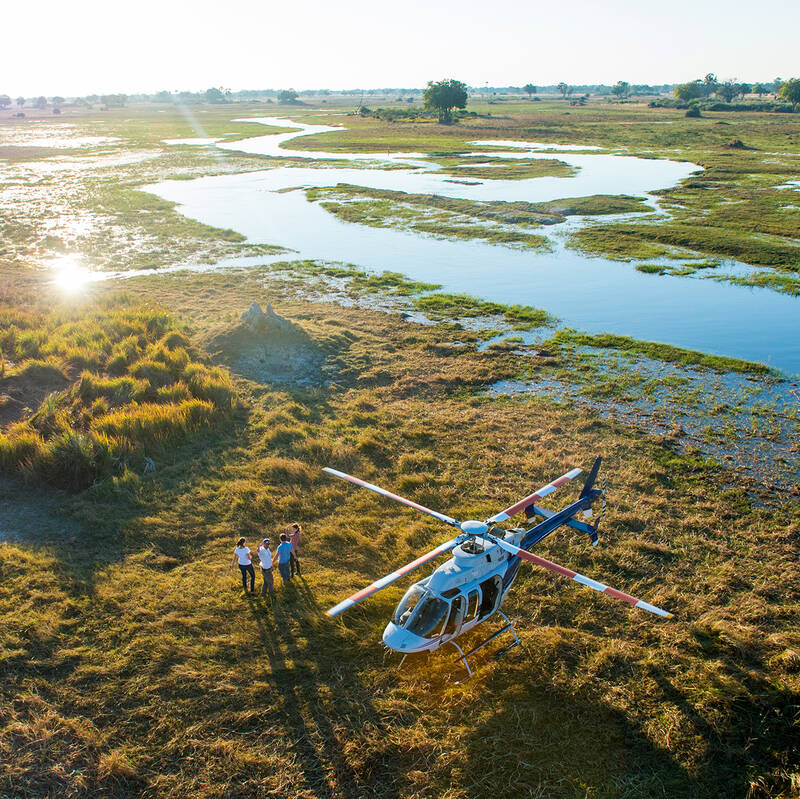
Helicopter Flight - Botswana
Various: from 30 minutes to half a day.
Low-flying, agile and offering superb views, helicopters are an ideal way to move around the Okavango Delta.You can use them instead of fixed-wing inter-lodge transfers or as an addition to other wildlife watching activities, and of course, helicopters can hover to allow that perfect pic, whereas fixed-wings can’t.
More about Helicopter FlightOther lodges in Central Kalahari Game Reserve
Alternative places to stay in this same area.
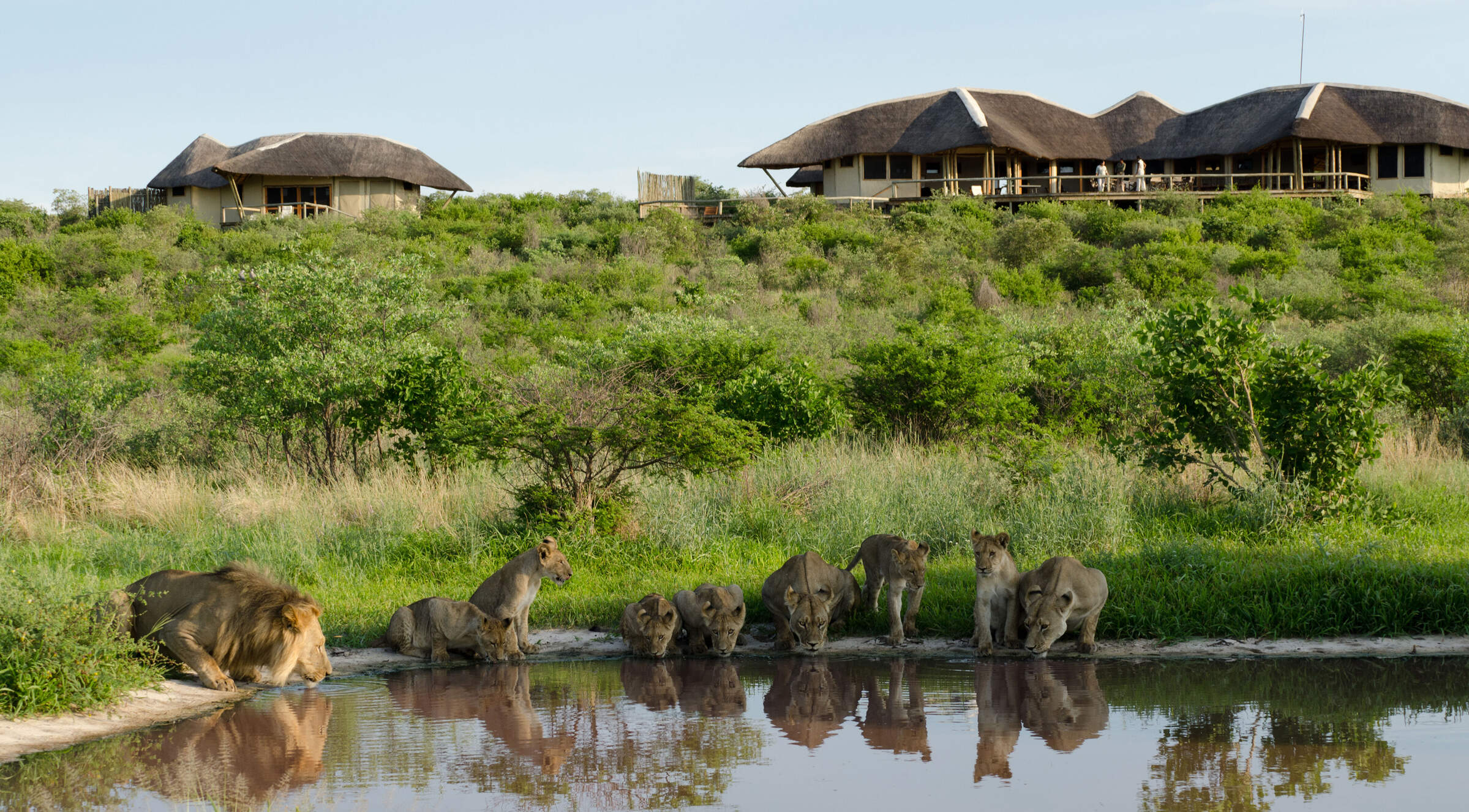
Tau Pan Camp
The comfortable Tau Pan camp inside the Central Kalahari Game Reserve offers some of Botswana's best summer game viewing and birdwatching.
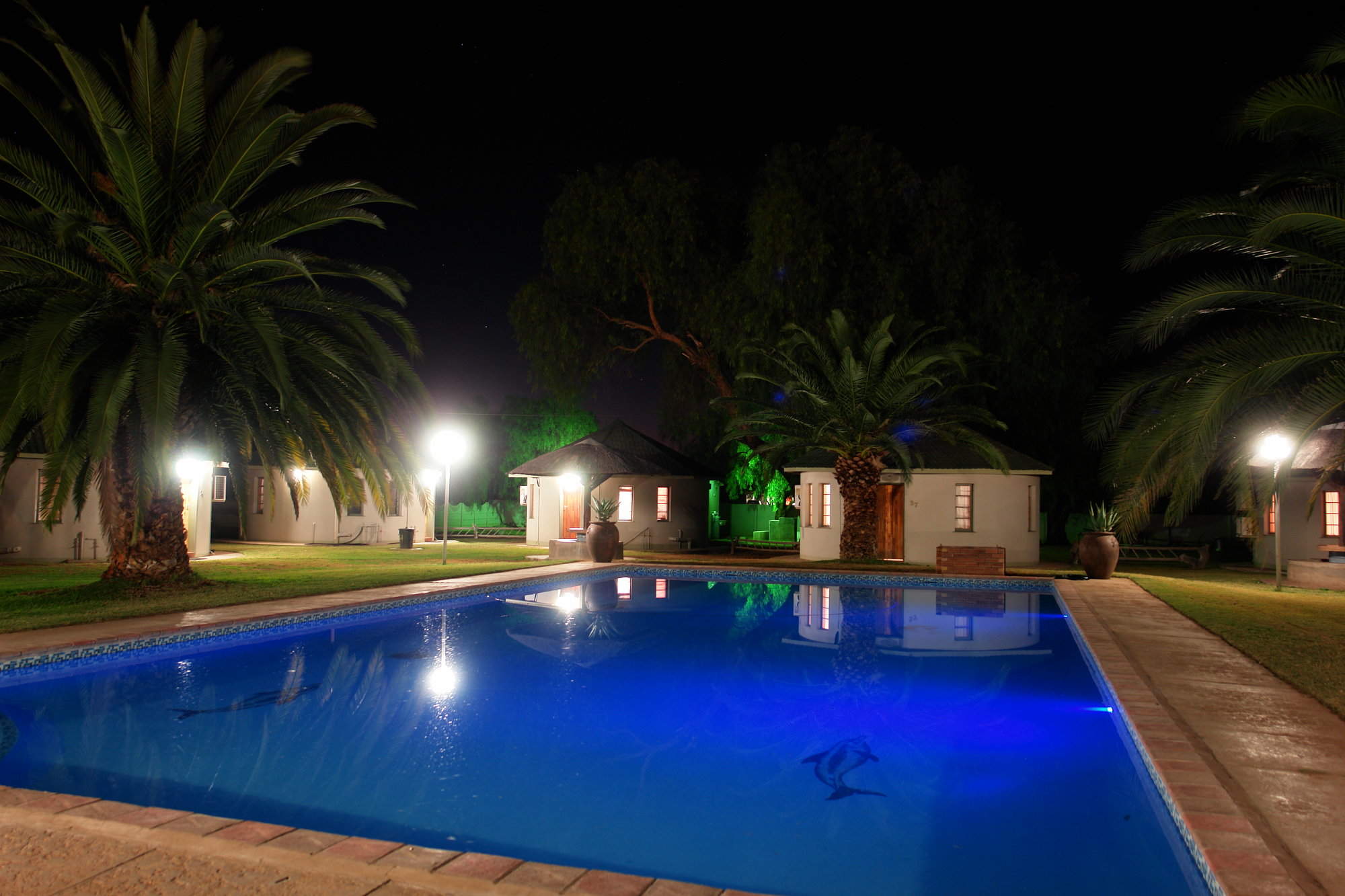
Kalahari Arms Hotel
Kalahari Arms Hotel, in the town of Ghanzi, is a practical overnight stop for travellers crossing the Kalahari to or from Namibia.
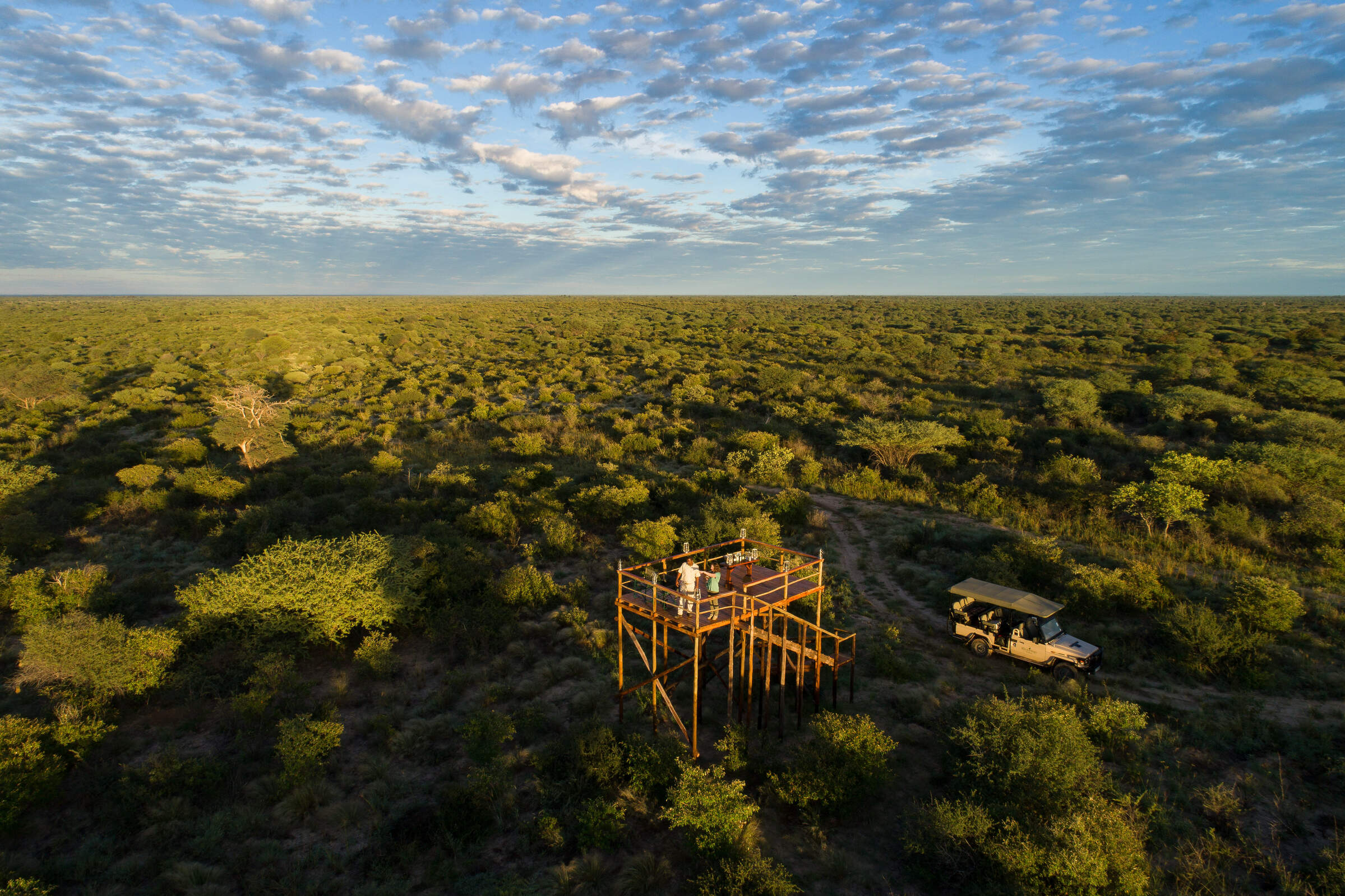
Dinaka
The newest addition to Ker and Downey Botswana’s portfolio, Dinaka is based on a private game reserve on the northern boundary of the CKGR.
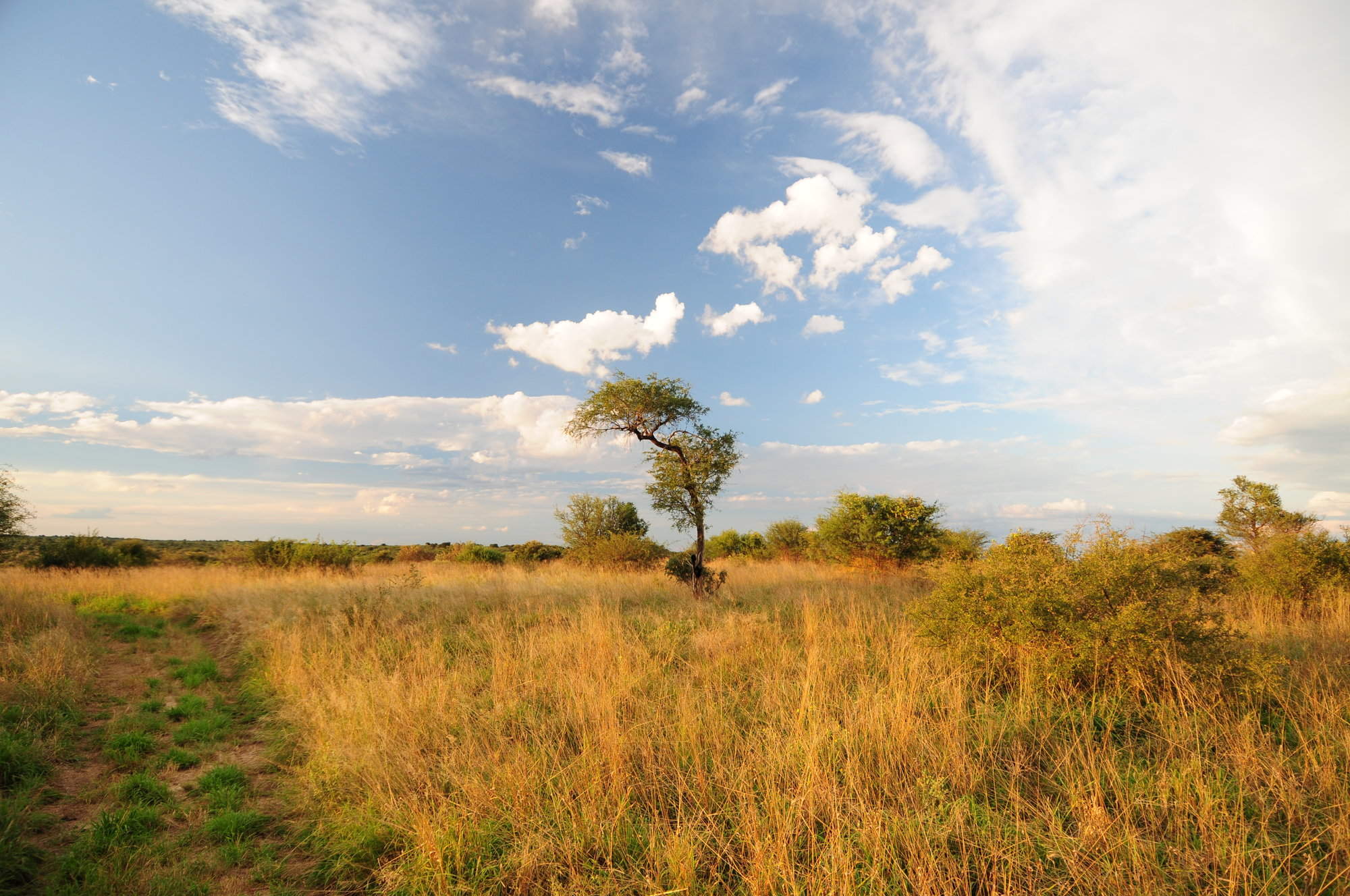
Deception Valley Lodge
A private reserve on the border of the CKGR, Deception Valley Lodge offers more flexible activities than within the reserve and a particularly good Bushman experience.
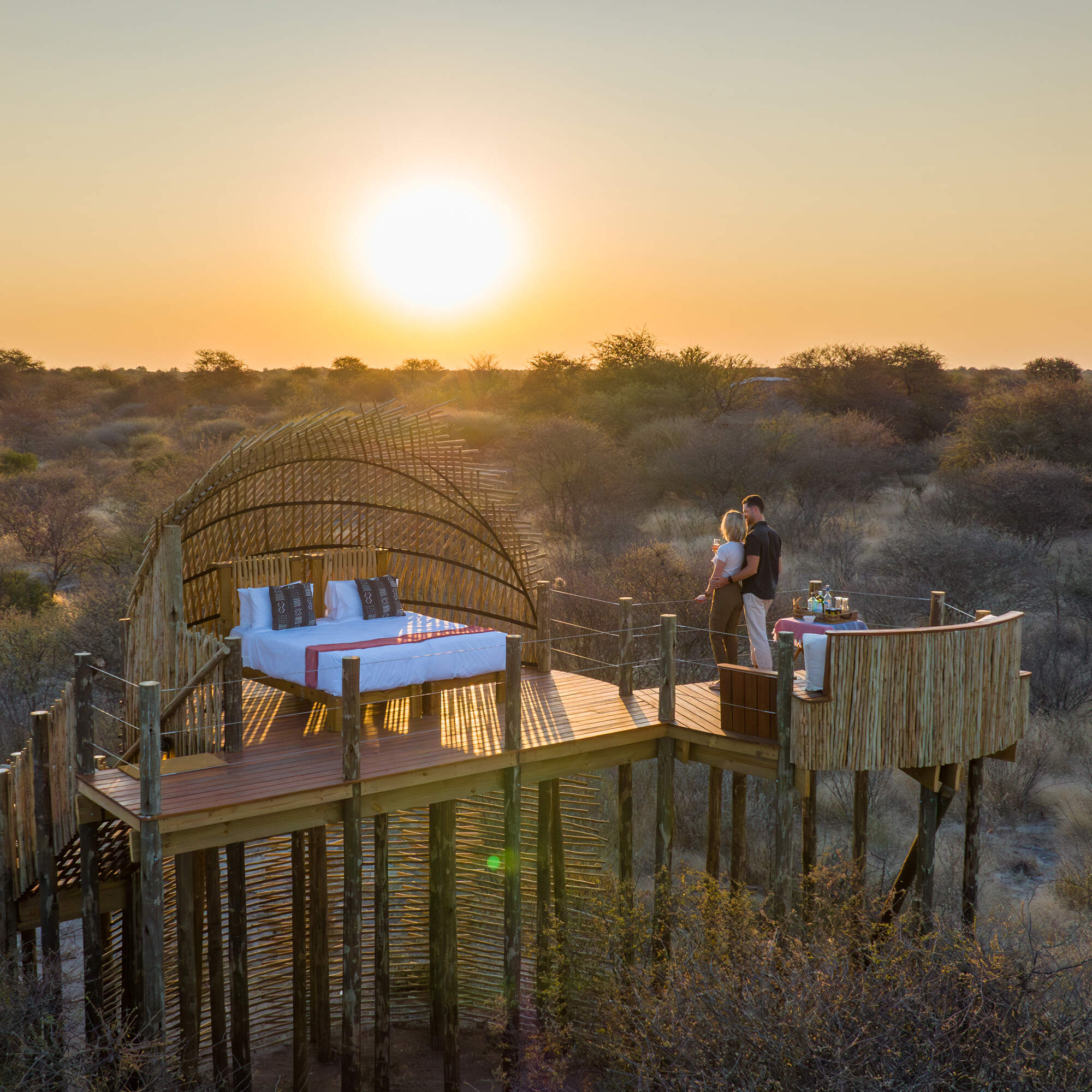
Gham Dhao Lodge
Within a private concession, Gham Dhao Lodge is one of a number of lodges located on the northern boundary of the CKGR, offering a year-round Kalahari experience.
When to go to Central Kalahari Game Reserve
Our month by month guide: What it's like to visit Edo's Camp in Central Kalahari Game Reserve
Jan
Feb
Mar
Apr
May
Jun
Jul
Aug
Sep
Oct
Nov
Dec
Central Kalahari Game Reserve in January
January marks the peak of the rainy season, transforming the arid terrain into a lush paradise with green grasslands and seasonal waterholes. Afternoon thunderstorms are common, bringing dramatic cloud formations and brief but intense downpours. Game viewing is spectacular, particularly in Deception Valley, where large herds of springbok, gemsbok, and wildebeest congregate, drawn by the nutrient-rich grasses.
Predators, including the famous black-maned Kalahari lions, thrive during this time, taking advantage of the abundance of newborn prey. Birdlife flourishes, with migratory species in full breeding plumage, filling the skies with vibrant colours and melodious calls. The combination of dramatic weather, abundant wildlife, and verdant landscapes makes this one of the most photogenic months in the Central Kalahari Game Reserve.
- Warm temperatures with frequent afternoon thunderstorms
- Large congregations of herbivores in the valleys
- High predator activity, particularly among lions and cheetahs
- Abundant migratory birds, including flamingos and raptors
- Lush, photogenic landscapes with dramatic cloudscapes
Our view
A very good time to visit
Weather in January
Central Kalahari Game Reserve in February
February continues the lush and green conditions, maintaining high concentrations of wildlife in the valleys. The abundance of food ensures that young animals, born in previous months, are still numerous, offering excellent predator-prey interactions as they become stronger but remain vulnerable. Birdwatching is at its best, with large numbers of waders, raptors, and colourful bee-eaters making the most of the insect-rich environment.
Relatively warm evenings make night drives comfortable, allowing guests to witness nocturnal species like brown hyenas and bat-eared foxes. Although thunderstorms still occur, they are typically brief and followed by stunning sunsets, bathing the plains in golden light.
- Lush landscapes, with scattered waterholes still full
- Predators actively hunting growing but vulnerable prey
- Exceptional birdwatching, with many species in breeding plumage
- Comfortable night drives with good sightings of nocturnal wildlife
- Dramatic sunsets following short-lived thunderstorms
Our view
A good time to visit, with pros & cons
Weather in February
Central Kalahari Game Reserve in March
March marks a transitional phase, as rains gradually decrease and the landscape begins to shift. The thick grass remains green, but visibility starts to improve as the vegetation thins slightly. Animal concentrations remain high in the valleys, with predators still capitalising on the abundance of prey. The last of the migratory birds prepare to depart, making this an excellent time for bird enthusiasts to catch their final glimpses of species like European rollers and yellow-billed kites.
As the air dries, dust and golden light enhance photographic opportunities, making it an ideal time for landscape photography. With fewer visitors compared to peak months, this is also a great time to enjoy a more exclusive experience.
- Rains taper off, with increased sunny days
- Wildlife still abundant, especially in Deception and Passarge Valley
- Predator-prey interactions remain at their peak
- Final weeks for migratory birds before they depart
- Excellent photography conditions - golden light and dramatic skies
Our view
A good time to visit, with pros & cons
Weather in March
Central Kalahari Game Reserve in April
Perhaps one of the best months to visit the Central Kalahari, April signals the end of the rainy season, yet the landscape remains vibrant. Seasonal water sources start to shrink, encouraging wildlife to remain near the valleys where grazing is still good. Morning and evening temperatures cool, making game drives more comfortable.
As the grasses begin to die back, visibility improves, making it easier to spot wildlife. Predators continue to linger in the valleys, as prey remains concentrated, providing excellent game-viewing opportunities. The clearer skies and crisp air make this a fantastic month for both wildlife and landscape photography.
- Cooler mornings and evenings, with little rainfall
- Vegetation thinning, improving game-spotting opportunities
- Wildlife still concentrated in valleys, though dispersal begins
- Excellent predator sightings, particularly cheetahs and lions
- Shoulder season pricing, making it an affordable yet rewarding time
Our view
Fantastic: the very best time to visit
Weather in April
Central Kalahari Game Reserve in May
May is a lovely month – usually with clear skies after the end of the rainy season. While the grass still holds some green hues, the land starts to take on its classic semi-arid Kalahari tones. Many herbivores begin to disperse into the surrounding vegetated dunes, though some remain in the valleys, followed closely by lions and cheetahs. The drying waterholes force game to move more, requiring greater tracking skills.
Early mornings and evenings are chilly, but daytime temperatures remain pleasant. As tourism increases, availability in lodges begins to decline, making early bookings essential.
- Cool mornings and evenings, but warm, dry days
- Wildlife still present, though dispersal begins
- Good predator activity, especially around remaining water sources
- Crisp air and golden light, ideal for photography
- Shoulder season ends, with increasing demand in lodges
Our view
A very good time to visit
Weather in May
Central Kalahari Game Reserve in June
In June, the dry season continues in earnest, bringing cool, crisp days and cold nights, sometimes dropping below freezing. As vegetation thins, spotting wildlife becomes easier, though animals are more spread out. Tracking skills become crucial for good sightings.
The lack of humidity means clear, stunning skies, both during the day and at night, making stargazing exceptional. With almost no cloud cover, the Milky Way is visible in all its glory, making Central Kalahari Game Reserve one of the best locations in Africa for astronomical photography.
- Warm days, freezing nights
- Wildlife more dispersed, requiring skilled tracking
- Peak predator activity continues, with great cheetah sightings
- Clear air enhances visibility for photographers
- Stunning night skies, perfect for stargazing
Our view
Fantastic: the very best time to visit
Weather in June
Central Kalahari Game Reserve in July
July is one of the coldest months in the Central Kalahari Game Reserve with dry air, chilly mornings, and freezing nights. Despite the cold, the clear, blue skies and bright sunlight make for perfect game drives. With vegetation at its sparse stage, wildlife visibility is excellent, though animals remain dispersed across the reserve. Tracking is key, with patient efforts rewarded by sightings of lions, cheetahs, and elusive brown hyenas.
The lack of light pollution makes CKGR one of the world’s best stargazing destinations, offering phenomenal views of planets, deep-space objects, and constellations.
- Cold nights, mild days, ideal for game drives
- Wildlife remains dispersed, requiring skilled tracking
- Predators remain active, especially cheetahs and lions
- Peak season begins, meaning high demand for camps
- Exceptional stargazing, with no humidity or light pollution
Our view
Fantastic: the very best time to visit
Weather in July
Central Kalahari Game Reserve in August
August remains dry and crisp, with temperatures slowly beginning to rise during the day, though nights remain cold. Occasional dust storms sweep across the Kalahari, adding an atmospheric drama to the landscape. With thin vegetation, game spotting is at its easiest, and smaller species, like honey badgers, aardwolves, and black-backed jackals, become more visible.
The cool, dry air enhances photographic clarity, creating sharp, vibrant imagery. As the Southern Hemisphere’s constellations reach their most visible stage, August is a prime month for astrophotography.
- Dry, warm days; cold nights persist
- Excellent visibility, making game-spotting easier
- Unique small predator sightings, including honey badgers and jackals
- Peak tourist season, with high demand in lodges
- Prime conditions for astrophotography, with dazzling celestial views
Our view
Fantastic: the very best time to visit
Weather in August
Central Kalahari Game Reserve in September
As temperatures begin to rise, the Central Kalahari Game Reserve transitions toward the hottest time of the year. The remaining water sources shrink, concentrating wildlife near pans and occasional artificial waterholes. Dust in the air intensifies Kalahari’s legendary sunsets, turning the sky into a fiery display of oranges, pinks, and deep reds.
Wildlife tracking requires more effort, as herds remain widely dispersed, but big cat sightings remain rewarding. With the increased heat, many animals seek shade midday, making early morning and late afternoon game drives the most productive.
- Warmer days, cool nights, perfect for most visitors
- Wildlife increasingly dependent on remaining water sources
- Active tracking needed for optimal predator sightings
- Striking sunsets, enhanced by dust and golden light
- High season rates, requiring early bookings for accommodation
Our view
Fantastic: the very best time to visit
Weather in September
Central Kalahari Game Reserve in October
October is the hottest month in the Central Kalahari Game Reserve, with daytime temperatures exceeding 40°C/104°F. The brutal heat forces animals into the shade, making early morning and late evening the best times for game drives. Big cats and scavengers patrol the remaining waterholes, creating dramatic predator-prey encounters.
Despite the harsh conditions, October’s dry, cracked landscapes offer striking photographic opportunities, with lone acacia trees and heatwaves shimmering on the horizon. Dust storms are frequent, adding an element of raw wilderness to the experience.
- Extreme heat, often exceeding 40°C/104°F
- Predators concentrate around last remaining water sources
- Intense, dramatic survival scenes play out between prey and predator
- Unique desert-adapted species remain active in the mornings and even
- Spectacular desert photography, with surreal, arid landscapes
Our view
A good time to visit, with pros & cons
Weather in October
Central Kalahari Game Reserve in November
November signals the beginning of the rains, breaking the intense heat and triggering an instant transformation of the landscape. The first thunderstorms arrive, refreshing the dry terrain and encouraging new grass growth, which in turn attracts the first herds of springbok, gemsbok and a scattering of wildebeest back to the valleys.
The return of migratory birds marks the start of the green season, with waders, raptors, and bee-eaters flocking to the area. Lightning storms create spectacular nightscapes, offering dramatic photographic opportunities.
- Hot days with first rain showers, cooling the landscape
- Fresh grasses begin to sprout, drawing herbivores back to the valley
- Predators remain active, anticipating the return of prey
- Migratory birds return, increasing birdwatching opportunities
- Dramatic lightning storms, perfect for photographers
Our view
A good time to visit, with pros & cons
Weather in November
Central Kalahari Game Reserve in December
December fully ushers in the green season, bringing regular rain showers and cooler temperatures. The plains burst into life, with newborn springbok and gemsbok appearing in particularly large numbers, attracting lions, cheetahs, and leopards.
Birdwatchers will find December particularly rewarding, with the highest density of migratory species present. The fresh green scenery, reflective waterholes, and contrasting storm clouds create a stunning backdrop for photography. Fewer tourists during this period make it a more exclusive safari experience, with lower rates in many lodges.
- Cooler temperatures, with frequent refreshing rains
- Newborn animals appear, drawing predators
- Exceptional birdwatching, with diverse migratory species
- Dramatic scenery, with green landscapes and stormy skies
- Lower season rates, making it an affordable time to visit
Our view
A good time to visit, with pros & cons
Weather in December

Looking for inspiration on where to travel next?
Visit our trip chooser to explore your options and find inspiration for your perfect African adventure
Inspire me